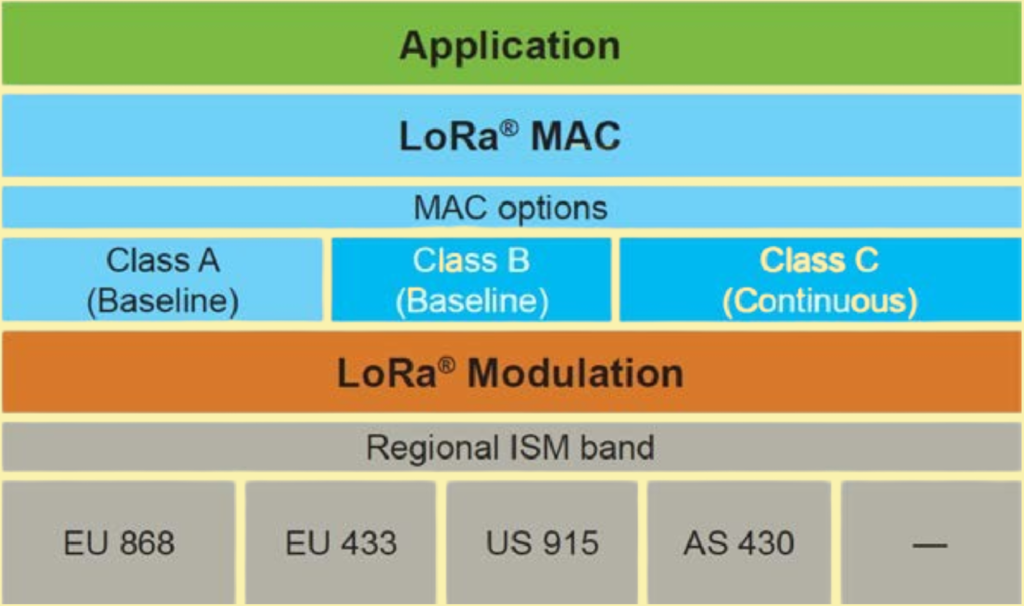LoRa operates within the framework of the LoRaWAN protocol, a specification developed and maintained by the LoRa Alliance. The LoRaWAN protocol defines the communication protocol and system architecture for the network, determining how devices communicate over the LoRa physical (PHY) layer. This includes specifications for both the Medium Access Control (MAC) layer and higher network layers.

Key Components of LoRaWAN.
- End Devices (Nodes): These are sensors or other IoT devices that collect data and send it to gateways. They can operate in different classes (A, B, and C) depending on their power consumption and latency requirements.
- Gateways: These act as bridges between end devices and the network server, receiving data from multiple devices and forwarding it to the server over a backhaul (usually IP-based) network.
- Network Server: This component manages the network, handling tasks such as data de-duplication, MAC commands, and security.
- Application Server: The final destination for the data, where it can be processed and used for various applications.
LoRaWAN Protocol Layers.
- Physical Layer (PHY): Defined by LoRa, it includes the modulation scheme and frequency bands used for communication.
- MAC Layer: Defined by the LoRaWAN specification, it governs how data is transmitted between end devices and gateways.
Network Architecture.
The LoRaWAN network architecture is typically a star-of-stars topology:
- Star-of-Stars Topology: End devices communicate with gateways in a star configuration. Gateways then relay data to a central network server, which forms another star configuration. This structure helps enhance coverage and scalability.
Key Features of the Protocol.
- Battery Lifetime: The protocol supports different classes of devices (A, B, and C) with varying power consumption profiles to optimize battery life. Class A devices have the lowest power consumption, while Class C devices have the highest.
- Network Capacity: LoRaWAN can support a large number of devices due to its efficient use of the spectrum and adaptive data rate (ADR) capability.
- Quality of Service (QoS): Different classes and adaptive data rates allow for varying levels of QoS to meet different application needs.
- Security: LoRaWAN provides robust end-to-end security, with encryption of both the payload and network communication.
- Versatility: The protocol can support a wide variety of applications, from simple sensor data collection to more complex control applications.
LoRaWAN Classes.
- Class A: Basic class with the lowest power consumption. End devices open receive windows only after transmitting a message.
- Class B: Adds scheduled receive windows, allowing for more predictable downlink communication.
- Class C: Keeps receive windows open almost continuously, offering the lowest latency at the cost of higher power consumption.
Conclusion.
The LoRaWAN protocol and network architecture are fundamental to the functionality and efficiency of LoRa-based networks. By defining how devices communicate and interact, the protocol influences key aspects such as battery life, network capacity, quality of service, security, and the range of supported applications. This makes LoRaWAN a versatile and powerful choice for a wide variety of IoT applications.